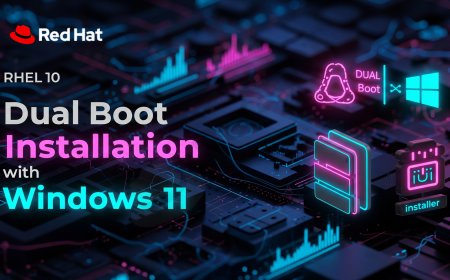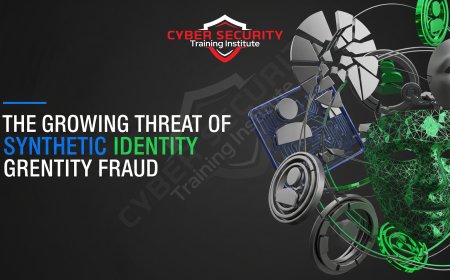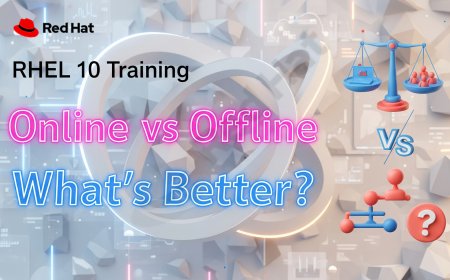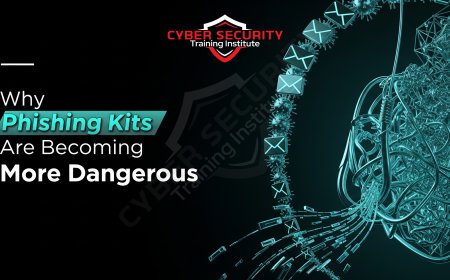The Role of Digital Twins in Cybersecurity Testing
The digital twin has evolved from a niche engineering tool into one of the most powerful cybersecurity testing platforms available today. This in-depth article explains the critical role that these hyper-realistic, real-time virtual replicas of physical systems are playing in modern cyber defense. We break down how digital twins provide the ultimate safe "sandbox" for security teams to simulate sophisticated, "cyber-physical" attacks without any risk to real-world operations. Discover how they are being used to validate security controls, run realistic "war game" scenarios, and provide invaluable, hands-on training for Security Operations Center (SOC) teams. The piece features a comparative analysis that clearly illustrates the advantages of testing in a high-fidelity digital twin environment versus a traditional, simplified IT staging environment. We also explore the vital role that digital twins are now playing in securing the critical national infrastructure that our modern economy depends on. This is an essential read for any security leader, engineer, or business operator in the industrial and critical infrastructure sectors who needs to understand how to safely test and harden their most important assets against the next generation of cyber threats.
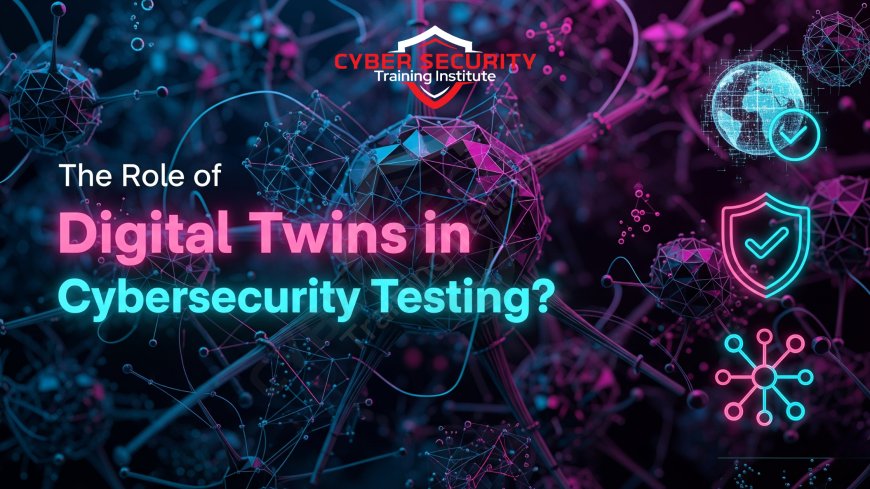
Introduction: The Ultimate Sparring Partner
How do you test the security of a power plant, a smart factory, or a fleet of autonomous vehicles without risking a real-world, physical catastrophe? For years, this was a massive and often insurmountable challenge for cybersecurity professionals. You simply can't unleash a test attack on a live industrial system. But what if you had a perfect, living, breathing virtual replica of that system to practice on? This is the revolutionary role that digital twins are now playing in cybersecurity. Originally created for design and operational efficiency, the digital twin has evolved to become the ultimate security testing ground. It's a hyper-realistic, safe, and scalable environment that is allowing organizations to find and fix the critical vulnerabilities in their most important physical assets before a real attacker can exploit them.
What is a Digital Twin? More Than Just a Simulation
It's important to understand that a digital twin is not just a static 3D model or a simple simulation. A true digital twin is a dynamic, virtual model of a physical object or system that is constantly updated with real-time data from its real-world counterpart. It is, in effect, a living digital shadow.
This is made possible by a vast network of Internet of Things (IoT) sensors that are attached to the physical asset. These sensors constantly measure key parameters—temperature, pressure, vibration, location, output—and feed this data to the digital twin platform in the cloud. This creates a two-way, living connection. The physical asset's current state and performance are perfectly mirrored in the digital twin. This was originally designed for operational purposes, allowing engineers to predict maintenance needs, optimize performance, and test new configurations in the virtual world before applying them to the real one. But security teams quickly realized that this perfect, living replica was also the perfect sparring partner. .
Simulating Cyber-Physical Attacks in a Safe Sandbox
The number one role of a digital twin in cybersecurity is to provide a safe and hyper-realistic sandbox for attack simulation. In the world of critical infrastructure, a successful cyberattack can have "kinetic" consequences—real-world physical damage. You cannot test your defenses against this by attacking your own live factory control system, as the risk of causing an accidental shutdown or a safety incident is far too high.
A digital twin completely removes this risk. A "red team"—a team of ethical hackers—can now unleash their full arsenal of attacks against the digital twin with no danger to the real-world operation. They can test a huge range of sophisticated "cyber-physical" attack scenarios:
- Can an attacker who has compromised the corporate IT network find a way to pivot and gain access to the sensitive Operational Technology (OT) network?
- What happens if an attacker sends a malicious command to the digital twin of a robotic arm? How does the system respond? Can the attack be detected?
- Can we spot a "data poisoning" attack, where an attacker is feeding the twin slightly manipulated sensor data to try and cause a long-term failure?
The digital twin allows security teams to ask and answer these critical "what if" questions in a completely safe environment.
Validating Defenses and Training Security Teams
A digital twin is not just for finding new vulnerabilities; it is an invaluable tool for testing and validating an organization's existing defenses and training its people.
- Testing the Security Stack: A security team can use the digital twin to run a realistic attack simulation and then see if their expensive security tools actually work as advertised. Did the EDR agent on the control system's server detect the malicious process? Did the NDR tool on the network spot the anomalous traffic? This allows them to fine-tune their detection rules and identify gaps in their security posture.
- Running "War Game" Scenarios: The digital twin is the perfect environment for running high-stakes "war game" exercises for the Security Operations Center (SOC). A red team can launch a full-scale, simulated attack on the twin, and the "blue team" (the defenders) can then practice their incident response plan in a highly realistic but completely safe environment.
- Training for the Real Thing: This provides an unparalleled training ground for security analysts and incident responders. It gives them invaluable, hands-on experience with the kind of complex, cyber-physical attacks they might one day face in the real world, turning textbook knowledge into practical, muscle-memory skill.
Comparative Analysis: Traditional Staging vs. Digital Twin Testing
A digital twin provides a level of realism and scope for security testing that a traditional, IT-focused "staging" environment can never hope to match.
| Testing Aspect | Traditional Staging Environment | Digital Twin Environment |
|---|---|---|
| Realism & Fidelity | Is a simplified, clean-room replica of an application. It often lacks the complexity, the legacy components, and the real-world data of the production environment. | Is a perfect, high-fidelity replica of the entire production system that is constantly being updated with live, real-world data from the physical asset. |
| Scope of Testing | Is primarily used for testing the IT side of an application. It almost never includes the complex, specialized Operational Technology (OT) components. | Is a fully cyber-physical environment. It allows security teams to test the entire attack chain, from the corporate IT network all the way down to the physical OT controllers. |
| Attack Simulation | Can be used to test for traditional software vulnerabilities like a weak API or a web application flaw. | Can be used to test for complex, emergent, and system-wide attacks, such as data poisoning, physical sabotage via the twin, or cascading failures. |
| Safety | Is safe for the production IT environment, but provides no insight into the safety of the physical operation. | Is completely safe for the real-world physical asset, allowing security teams to simulate even the most destructive attacks with zero physical risk. |
Securing Critical Infrastructure in a Modern Economy
In any modern, industrialized economy, the security of critical infrastructure—the power grids, the water treatment plants, the transportation networks, and the advanced manufacturing facilities—is a matter of national importance. These complex, cyber-physical systems are incredibly difficult to secure and even harder to test safely without risking a public safety incident.
For the operators of this critical infrastructure, digital twins are becoming an essential and indispensable security tool. A national power grid operator, for example, can use a highly detailed digital twin of their entire grid to simulate how it would respond to a sophisticated, nation-state-level cyberattack. They can test their defensive controls, train their incident response teams, and identify hidden, systemic weaknesses that could lead to a cascading failure, all without ever putting the real power supply at risk. For these critical industries, the digital twin is rapidly moving from an operational "nice-to-have" to a cybersecurity "must-have."
Conclusion: The Proving Ground for a Secure Future
The digital twin has evolved far beyond its original purpose as a tool for design and operational efficiency. It has become one of the most powerful and effective cybersecurity testing and training platforms that we have ever created. The ability to create and interact with a perfect, live, and safely sandboxed replica of a complex, real-world physical system is its superpower.
It allows organizations to proactively find and fix their most dangerous vulnerabilities before an attacker does. It allows them to rigorously test their expensive defensive tools and their human response processes. And it allows them to train their security teams against the most realistic possible attack scenarios. As our world becomes more connected and our critical infrastructure becomes more intelligent, the digital twin will be the essential proving ground where we learn how to defend our physical reality from our digital adversaries.
Frequently Asked Questions
What is a digital twin?
A digital twin is a dynamic, real-time virtual model of a physical object or system. It is constantly updated with data from sensors on the physical asset, making it a living, breathing digital replica.
How is it different from a normal simulation?
A normal simulation is based on a static model. A digital twin is a simulation that is based on a model that is constantly being updated with live, real-world data from its physical counterpart, making it far more accurate and realistic.
What is a "red team"?
A "red team" is a group of ethical hackers that is hired by an organization to emulate the tactics of real-world adversaries and to test the organization's defenses.
What is Operational Technology (OT) security?
OT security is the field of cybersecurity that is focused on protecting the industrial control systems (ICS) and other hardware and software that monitor and control physical processes in environments like factories and power plants.
What is a "cyber-physical system"?
A cyber-physical system is any system where computer-based algorithms are deeply integrated with and control a physical object or process. The combination of a digital twin and its real-world asset is a classic example.
Can a digital twin be used to test for ransomware?
Yes. A security team could simulate a ransomware attack on the IT servers that are part of the digital twin's environment to test how quickly they can detect it and if it could spread to the OT network.
What is a "staging environment"?
A staging environment is a type of test server that is set up to be a replica of the real "production" environment. It is used by developers to test their code before it goes live. However, it is often a simplified replica and lacks the real-world data of a digital twin.
What does it mean for an alert to be "high-fidelity"?
A high-fidelity alert is one that is almost certainly a real, malicious event and not a false positive. Deception technology, a related field, is known for generating high-fidelity alerts.
What is "data poisoning"?
Data poisoning is an attack where a hacker subtly manipulates the data that an AI model is learning from. A digital twin can be used to safely simulate and test defenses against this type of attack.
What is a "kinetic" impact?
A kinetic impact is when a cyberattack causes a direct, real-world physical effect, such as causing a machine to break or a power plant to shut down. Digital twins help to test for these scenarios safely.
Who uses digital twins?
They are used in a wide range of industries, including manufacturing, aerospace, energy, and urban planning. Any industry that manages complex, high-value physical assets can benefit from them.
Is the digital twin itself a target for hackers?
Yes, absolutely. As we've discussed in other articles, the digital twin itself is a major new attack surface. This is why testing its security is so critical.
What is a SOC?
A SOC, or Security Operations Center, is the centralized team of people and technology that is responsible for monitoring and defending an organization from cyberattacks. A digital twin is a perfect training ground for a SOC team.
What is an IoT sensor?
An IoT (Internet of Things) sensor is a device that can measure a physical property (like temperature or vibration) and transmit that data over a network. They are the "nervous system" that feeds data to a digital twin.
What is a "sandbox"?
A sandbox is a secure, isolated environment where a program or an attack can be run and analyzed without it being able to affect the main production network. A digital twin is the ultimate sandbox for cyber-physical systems.
What does it mean for an attack to be "emergent"?
An emergent attack is one that arises from the complex interactions between different parts of a large system. It's a type of attack that is not obvious from looking at any single component in isolation. Digital twins are great for finding these.
What is a PLC?
A PLC, or Programmable Logic Controller, is a ruggedized industrial computer that is a core component of many industrial control systems. A digital twin would include a virtual model of the PLCs.
What is "defense-in-depth"?
Defense-in-depth is a core security principle that involves layering multiple, different security controls. A digital twin helps an organization to test how well its different layers work together.
Can a small company use a digital twin?
While they have traditionally been used by very large industrial companies, the cost of the technology is decreasing, and more mid-sized businesses are beginning to adopt them for their most critical assets.
What is the number one benefit of using a digital twin for security?
The number one benefit is safety. It allows an organization to test for and practice responding to the most catastrophic, physically damaging cyberattack scenarios in a completely safe, virtual environment with zero risk to the real world.
What's Your Reaction?
 Like
0
Like
0
 Dislike
0
Dislike
0
 Love
0
Love
0
 Funny
0
Funny
0
 Angry
0
Angry
0
 Sad
0
Sad
0
 Wow
0
Wow
0






